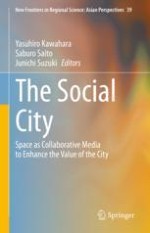This book is the first coherent presentation of the latest research and practices concerned with how recent advances in mobile information and communication technology (ICT) and the Internet of Things (IoT) are utilized to enhance the value of the city and change the way that city planning and management are carried out. Its salient feature is the pursuit of the individual-oriented evaluative point of view regarding the city. This view considers the value of the city to be the total of visit-values individuals feel and appreciate when they visit the city. The visit-value is conceptualized as the intangible asset value of the attractiveness of the city that visitors form in their minds based on their experiences and activities in the city, transactions with city space, and communications with other people. Visitors to the city may well be quite heterogeneous individuals with different motives and preferences. Thus, to enhance the value of the city, quite different visit values of heterogeneous individuals should be enhanced simultaneously, which necessitates the use of ICT and IoT in living spaces. Based on this view, the city utilizing ICT and IoT to enhance the value of the city is called the social city. Whereas many other books deal with the impacts of the advances in mobile ICT on the city, they only discuss how these advances change the infrastructure of the city but do not discuss how these technological advances can be utilized to enhance the city’s value. This book first develops the concept of the social city based on an individual micro-behavioral approach. Then, it presents the latest studies on technological components of the social city, such as the human-sensing technology for estimating individual behavior, decision making, and mood; the visualizing technology of the thermal 3-dimensional environment of the city; and the social-sensing technology using social networking service (SNS) for measuring and creating an atmosphere of city space. Finally, it envisages the future of the social city.
